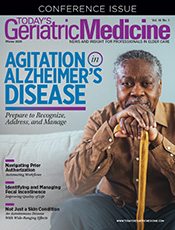
Winter 2025
Winter 2025 Issue The Last Word: For the Future of Health Equity We Must Redefine the Way We Care As the quantity and quality of new medical treatments have increased during the past 50 years, the quest for a way to determine the “value” of treatments has intensified. One of the earliest of these metrics, which is still in use today, is the quality-adjusted life year, or QALY. QALYs determine the price value of a medication or therapeutic by assessing the improvement it produces in a patient’s condition. The metric measures this improvement by the additional years of equivalent “perfect health” the treatment adds to a patient’s lifetime.1 The longstanding use of the QALY, however, hardly qualifies it as venerable. In fact, its deficiencies have only become more apparent over time. It discriminates against some of the most vulnerable populations, and it’s time for a replacement. A better approach to value is now emerging, one that takes a much more holistic and patient-centered view of quality of life. It’s called SoLV, or standard of living valuation. Its innovative approach has the potential to improve equitable access to care, especially among patients whose well-being the QALY has a long record of undervaluing. Under the QALY algorithm, treatments that improve the lives of older people, disabled people, or those with chronic disease receive lower valuations than those that deliver benefits for younger people in perfect health. The US health care system hasn’t historically decided what treatments are worth paying for on the basis of the QALY, but other countries do. Many health policy professionals and economists have begun to import QALYs for use stateside despite protests and pushback from the patient community. The result would be flagrant discrimination against older, disabled, and marginalized people, all of whom cope with chronic diseases at higher rates than the general population.2-6 We must reevaluate what “value” really means. We must redefine the ethics of care in a way that doesn’t discriminate based on age, race, or ability. That’s where SoLV comes in.7 This new metric—developed jointly by the Alliance for Aging Research and Milliman, a health care consultancy—leverages real-world data, real-world evidence, and socioeconomic information to produce better determinations of treatment value.7 This approach offers a more well-rounded portrait of a patient’s life. It also capitalizes on the evolving realities of health care, where real-world data plays an increasing role in developing services and strategies for patients.8 Under SoLV, all the demographic data associated with life expectancy and quality of life can come into consideration—from income, education, and housing to diet, family support, and leisure activities.7 These metrics aim to capture a wider range of the “value” a person might experience from a treatment. For the chronically ill and disabled, that’s a massive shift. By linking household income to health outcomes, for example, the SoLV framework acknowledges that people from lower-income households may have worse health outcomes due to socioeconomic factors—like income, education, and living conditions—and that they can and often do have a major impact on an individual’s health. Instead of just focusing on how long or how well a treatment extends life, SoLV looks at the real-world impact of these factors on health outcomes.7 SoLV can also account for the lifestyle benefits offered by a medicine or service, such as how many more days it can enable someone to spend at home vs in a care facility, or how many encounters with health care providers it can obviate the need for. The QALY is discriminatory and outdated, and it doesn’t reflect our values as Americans. SoLV is a better solution. — Adina Lasser is the public policy manager at the Alliance for Aging Research.
References 2. Basu A, Lynn N, Peschin S, Resendez J. Value assessment in Alzheimer’s disease: a focus on equity. ISPOR website. https://www.ispor.org/publications/journals/value-outcomes-spotlight/vos-archives/issue/view/valuing-future-alzheimers-disease-treatments-the-need-for-a-holistic-approach/value-assessment-in-alzheimers-disease-a-focus-on-equity. Published March 2021. 3. Pyenson B, Smith R, Halpren A, Entezarian P. A new framework for quantifying healthcare value using real-world evidence. https://www.milliman.com/-/media/milliman/pdfs/2024-articles/8-26-24_a-new-framework-healthcare-value-evidence.ashx. Published August 2024. 4. Chronic disease indicators: older adults. Centers for Disease Control and Prevention website. https://www.cdc.gov/cdi/indicator-definitions/older-adults.html#:~:text=Aging%20increases%20 5. Price JH, Khubchandani J, McKinney M, Braun R. Racial/ethnic disparities in chronic diseases of youths and access to health care in the United States. Biomed Res Int. 2013;2013:787616. 6. Alternatives to QALY-Based Cost-Effectiveness Analysis for Determining the Value of Prescription Drugs and Other Health Interventions. National Council on Disability website. https://www.ncd.gov/report/alternatives-to-qaly-based-cost-effectiveness-analysis-for-determining-the-value-of-prescription-drugs-and-other-health-interventions/. Published November 28, 2022. 7. Report: novel alternative to QALYs. Alliance for Aging Research website. https://www.agingresearch.org/news/report-novel-alternative-to-qalys/. Published August 27, 2024/ 8. Moss J. Unlock the power of Real World Data (RWD) to drive innovation in the healthcare industry. IQVIA website. https://www.iqvia.com/blogs/2024/03/unlock-the-power-of-real-world-data-to-drive-innovation-in-the-healthcare-industry. Published Mar 13, 2024.
|
